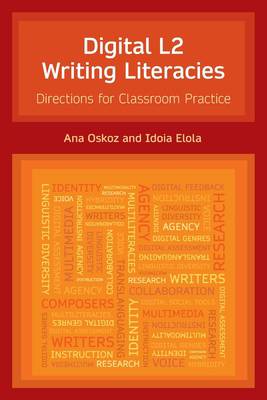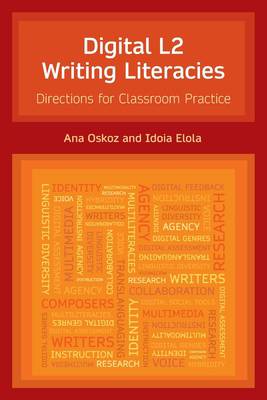
En raison d'une grêve chez bpost, votre commande pourrait être retardée. Vous avez besoin d’un livre rapidement ? Nos magasins vous accueillent à bras ouverts !
- Retrait gratuit dans votre magasin Club
- 7.000.000 titres dans notre catalogue
- Payer en toute sécurité
- Toujours un magasin près de chez vous
En raison de la grêve chez bpost, votre commande pourrait être retardée. Vous avez besoin d’un livre rapidement ? Nos magasins vous accueillent à bras ouverts !
- Retrait gratuit dans votre magasin Club
- 7.000.0000 titres dans notre catalogue
- Payer en toute sécurité
- Toujours un magasin près de chez vous
46,45 €
+ 92 points
Description
Digital L2 Writing Literacies offers an up-to-date overview of digital writing in L2 contexts and illustrates how digital media have expanded the options for research and teaching language and writing in particular. Written by two of the leading educators and researchers in the field, this volume offers a comprehensive review of the literature along with cutting-edge theoretical perspectives on multilingual and multimodal composing for those conducting research and practical ideas for curriculum and instruction for those working with multilingual students in second language, foreign language, and heritage language classrooms. The main chapters provide the necessary background of definitions, key research findings and descriptions of practices, along with detailed sample learning projects and ideas for reflection and discussion that those involved in L2 writing should find interesting and relevant. The authors begin with a wide-ranging review of digital tools and environments and how these are influencing communicative practices and written genres. They address how those tools and environments encourage interactive and collaborative writing in online environments, present innovative multimodal forms of composing such as digital storytelling, and provide new avenues and modes for expression of multilingual writer voice and identity. They further discuss how feedback, revision, and assessment practices for L2 writing must change to reflect the changing processes and products of digital composing. At the end of the book, the authors provide a model of theoretical and pedagogical factors that impact digital L2 writing and include a future-oriented discussion of L2 writing and digital practices in the 21st century, making for a stimulating set of implications and take-away messages to ponder. As the most comprehensive and current state-of-the-art treatment of its subject matter, Digital L2 Writing Literacies: Directions for Classroom Practice is simply the must-read book for all those with an interest in L2 digital writing and language teaching.
Spécifications
Parties prenantes
- Auteur(s) :
- Editeur:
Contenu
- Nombre de pages :
- 250
- Langue:
- Anglais
- Collection :
Caractéristiques
- EAN:
- 9781781796931
- Date de parution :
- 01-08-20
- Format:
- Livre broché
- Format numérique:
- Trade paperback (VS)
- Dimensions :
- 156 mm x 234 mm
- Poids :
- 421 g

Les avis
Nous publions uniquement les avis qui respectent les conditions requises. Consultez nos conditions pour les avis.






